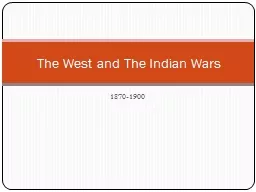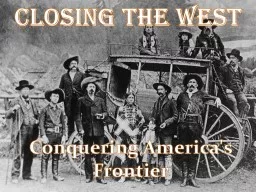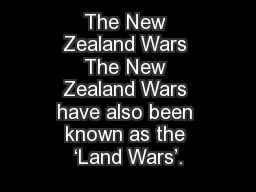PPT-1870-1900 The West and The Indian Wars
Author : yoshiko-marsland | Published Date : 2019-12-18
18701900 The West and The Indian Wars The Homestead Act The Homestead Act was signed by Abraham Lincoln in May of 1862 It gave anyone who wanted to move westward
Presentation Embed Code
Download Presentation
Download Presentation The PPT/PDF document "1870-1900 The West and The Indian Wars" is the property of its rightful owner. Permission is granted to download and print the materials on this website for personal, non-commercial use only, and to display it on your personal computer provided you do not modify the materials and that you retain all copyright notices contained in the materials. By downloading content from our website, you accept the terms of this agreement.
1870-1900 The West and The Indian Wars: Transcript
Download Rules Of Document
"1870-1900 The West and The Indian Wars"The content belongs to its owner. You may download and print it for personal use, without modification, and keep all copyright notices. By downloading, you agree to these terms.
Related Documents














